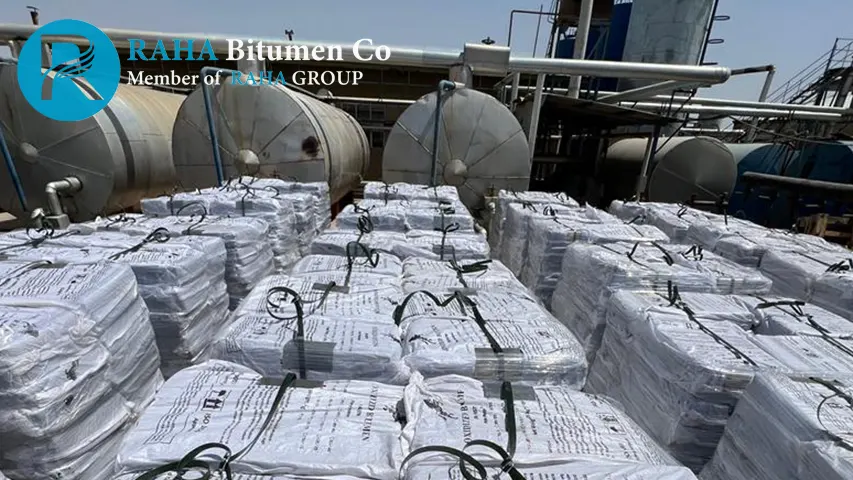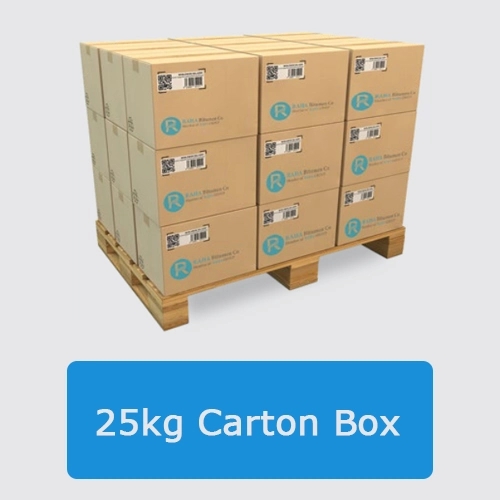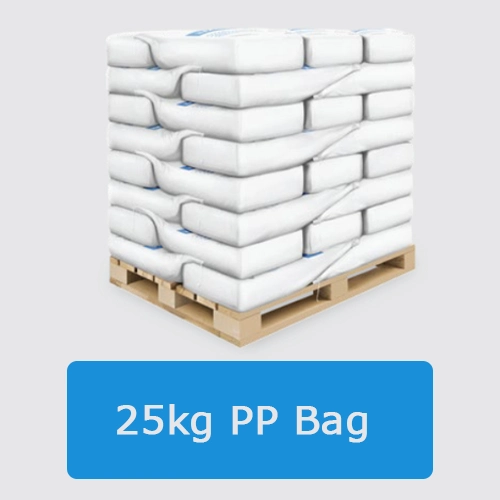
Introduction
Oxidized bitumen 105/15, is a versatile and highly durable material widely utilized in various industrial applications due to its superior physical and chemical properties. This type of bitumen is produced by the controlled oxidation of standard penetration-grade bitumen, resulting in a product with enhanced performance attributes.
Description of Oxidized Bitumen 105/15
Oxidized Bitumen 105/15 is produced by either a Continuous or Staggered Blowing Process. Heated Penetration Grade Bitumen under a controlled environment is blown with air which controls the Oil Content in the Bitumen while it oxidizes.
The softening point value was measured by the Ring and Ball method as determined by ASTM D36. Also, the penetration value is in 1/10 mm as determined by IP49 or ASTM- D5.
With enhanced thermal stability and superior adhesion properties, this grade delivers dependable performance in a wide range of industrial and construction applications, particularly under high-temperature environments. This grade is ideal for road construction, adhesives, and sealants.
Process Manufacturing of Oxidized Bitumen 105/15
The manufacturing process of oxidized bitumen 105/15, often called blown bitumen, involves a series of carefully controlled steps designed to enhance the material’s properties for various industrial applications. This process begins with the selection of high-quality base bitumen, typically derived from the distillation of crude oil. The chosen base bitumen must meet specific standards to ensure it has the appropriate characteristics for oxidation.
1. Heating the Base Bitumen:
The first step involves heating the selected base bitumen to a temperature range of 240 to 300 degrees Celsius. This heating is essential to bring the bitumen to a molten state, ensuring it is sufficiently fluid for the subsequent oxidation process. The heating is typically carried out in specialized furnaces or heating tanks equipped with temperature control mechanisms to maintain the desired temperature range consistently.
2. Oxidation:
Once the bitumen reaches the required temperature, it is transferred to an oxidation chamber or reactor. The oxidation chamber is designed to introduce air into the molten bitumen in a controlled manner. Air is blown through the bitumen using a series of nozzles or spargers, initiating a chemical reaction between the oxygen in the air and the hydrocarbons in the bitumen. This process, known as air blowing, breaks down the molecular structure of the bitumen and forms new, more complex molecular chains. As a result, the bitumen’s viscosity increases, and its softening point is raised.
3. Controlled Conditions:
The oxidation process conditions, including temperature, airflow rate, and duration, are meticulously controlled to achieve the desired properties of oxidized bitumen 105/15. For this specific grade, the goal is to obtain a softening point of approximately 105 degrees Celsius and a penetration value of 15 dmm (decimillimeters). The precise control of these parameters ensures the final product meets the required performance standards. The duration of the oxidation process can vary but typically lasts several hours, depending on the desired final properties.
4. Cooling and Solidification:
After the oxidation process, the oxidized bitumen is gradually cooled to allow it to solidify. This cooling process is crucial to ensure the bitumen attains the desired hardness and consistency. Cooling can be done in air-cooled or water-cooled systems, depending on the production setup. The solidified bitumen is then removed from the cooling system and transferred to storage or further processing facilities.
5. Quality Control:
The solidified oxidized bitumen undergoes rigorous quality control testing to ensure it meets the specified parameters. Tests typically include measuring the softening point, penetration, and other relevant properties to confirm compliance with industry standards. Quality control ensures that the bitumen performs reliably in its intended applications, such as waterproofing, roofing, and industrial coatings.
6. Packaging and Distribution:
Finally, the oxidized bitumen 105/15 is packaged for distribution. The packaging can vary depending on customer requirements and intended use, including drums, bags, or bulk containers. Proper packaging is essential to protect the bitumen from contamination and facilitate easy transportation. The packaged bitumen is then distributed to various industries, where it is used in a wide range of applications, thanks to its enhanced durability and performance characteristics.
The Capability of Oxidized Bitumen 105/15
Uses of Oxidized Bitumen 105/15
Oxidized Bitumen 105/15 uses in the chemical, fuel, paints, lacquers, varnishes, paper-pulp-board, textile processing, road construction, pavement ,crack seal and repairmen, civil works, roofing, construction industries; sealing and insulating buildings, adhesive, construction materials additive, dust-binding, coating, insulating and impregnating agent, make rubber and plastic products. The blown asphalt 105/15 products are for paving, roofing; also used in asphalt based paints for corrosion protection of metals, in lining public works structures, adhesives in electrical laminates, base for synthetic turf; typical uses for oxidized asphalt 105/15 include roofing, pipe coating, Portland cement pavement, hydraulic applications, paint manufacturing.
Benefits and Advantages of Oxidized Bitumen 105/15
- Balanced Hardness and Flexibility: Ideal for applications where an optimal blend of hardness and flexibility is crucial.
- Long-lasting Durability: It excels in outdoor applications due to its resistance to weathering.
Stable Performance: Enhanced thermal stability allows it to maintain its properties under different temperature conditions. - Adhesive Strength: Oxidized Bitumen 105/15 offers excellent adhesion properties, enhancing its effectiveness in various applications.
- Versatile Industrial Usage: Suitable for road construction, industrial coatings, and more, thanks to its versatility.
Oxidized Bitumen 105/15 packing
Oxidized Bitumen 105/15 must be packed at hot degrees and the packing must have the ability to resist in front of this temperature so we are packing it in Kraft paper, poly bags, and carton boxes with pallets or without pallets and the weight of each bag and carton box would be 25 kg.
Major of Oxidized Bitumen 105/15 Packings
25kg Carton Box- Palletized and Shrink
Wrapped:
- Loading 880 Carton Box in 20ft Contai-
ner= 22 Ton Net

25kg PP Bag- Palletized and Shrink
Wrapped:
- Loading 920 Bag in 20ft Container= 23
Ton Net

Hazard Identification of Oxidized Bitumen 105/15
NOT classified as dangerous in accordance with Directive 67/548/EEC or EC 1272/2008.
The main hazards presented by Asphalt The following
hazards may apply:
- Hot materials may burn the skin.
- Fumes from Asphalt are unlikely to be hazardous when laid in open-air situations, but there may be a risk to health by continuous inhalation of high vapor concentrations which might arise in poorly.
- ventilated, confined, or semi-confined spaces.
- Asphalt is not a dusty material, but respirable dust may be released by cutting, drilling, or planning hardened asphalt. If inhaled in excessive quantities over a prolonged period or extended period, respirable dust can constitute a long-term health hazard.
- Dusts containing Respirable Crystalline Silica* (quartz) present a greater hazard.
- Long-term exposure to respirable dust can lead to respiratory system damage and disease. Respirable crystalline silica* has been associated with the lung disease silicosis.
- The quartz content of the product will vary, and is related to the type of aggregate used in the production of the asphalt.
- Advice on the quartz content and other chemical information is available from the supplying unit.
Storage and Handling of Oxidized Bitumen 105/15
- The heating of packaged bitumen is a critical phase in most of the final uses. Typically, the packaged material is heated and melted in boilers out on site.
- However, control at the heating phase is very important in terms of health and safety as well as in maintaining the quality of the product.
- The note must be taken of the maximum safe handling temperature of 230 C and this should not be abused. Bitumen is a poor conductor of heat, consequently, control of the heating phase is of paramount importance.
- The Blown Bitumen material should be broken up before placement in the boiler. This exposes a larger surface area to the heat and encourages a more even heating regime.
Without the larger exposed surface area, aggressive heating at the base and sides of the boiler may well result in localized overheating, altering the characteristics of the modified bitumen and potentially causing thermal cracking of the bitumen, creating the release of low lash vapors.
The flashpoint of the oxidized bitumen then becomes irrelevant; as these low flash vapors determine the fire risk. - Melted bitumen should not be left in the boiler and reheated from cold, as there is then a high potential for localized overheating around the heating area (lack of convection means poor heat transfer) and potential development of a pressurized pocket of low flash vapors.
- Be aware of the placement of any temperature monitoring or control devices. As a result of the poor thermal conductivity of the bitumen, a thermometer in the bitumen some distance from the heat source could read significantly different (even hundreds of degrees) from the true temperature of the bitumen near the heat source.
- For Health and Safety information, please make reference to the relevant MSDS.
Oxidized Bitumen 105/15 Specification
| CHARACTERISTIC | Test method | Unit | Specification |
|---|---|---|---|
| Specific gravity @25/25 C | ASTM D70 | (Kg/m3) | 1.05 approx. |
| Penetration @ 25°c | ASTM D5 | mm/10 | 10/20 |
| Softening point °c | ASTM D36 | °C | 100/110 |
| Loss on heating(wt) % | ASTM D6 | Wt. % | 0.2 max |
| Flashpoint c | ASTM D92 | °C | 250 min |
| Solubility is CS2(wt) % | ASTM D4 | Wt. % | 99.5 max |
| Spot test | A.A.S.H.O.T102 | — | Negative |
In Summary
Oxidized bitumen 105/15 is a highly durable and versatile material extensively used in various industrial applications due to its superior physical and chemical properties. Produced through the controlled oxidation of standard penetration-grade bitumen, this type of bitumen exhibits enhanced performance attributes such as increased viscosity and a higher softening point. The manufacturing process involves heating the base bitumen to a molten state, followed by a controlled oxidation process where air is blown through the bitumen, altering its molecular structure. The resulting product, oxidized bitumen 105/15, offers excellent thermal stability and superior adhesion properties, making it ideal for road construction, adhesives, sealants, and other high-temperature applications.
The production of oxidized bitumen 105/15 includes meticulous steps such as heating, controlled oxidation, cooling, solidification, and rigorous quality control to ensure it meets the desired specifications. Quality control tests, such as measuring the softening point and penetration values, confirm the bitumen’s suitability for various applications, including waterproofing, roofing, and industrial coatings. Packaged in various forms to protect it from contamination and facilitate transportation, oxidized bitumen 105/15 is widely used in industries ranging from construction to chemical manufacturing. Its balanced hardness and flexibility, long-lasting durability, stable performance under different temperatures, and excellent adhesive strength underscore its importance in modern industrial applications.


